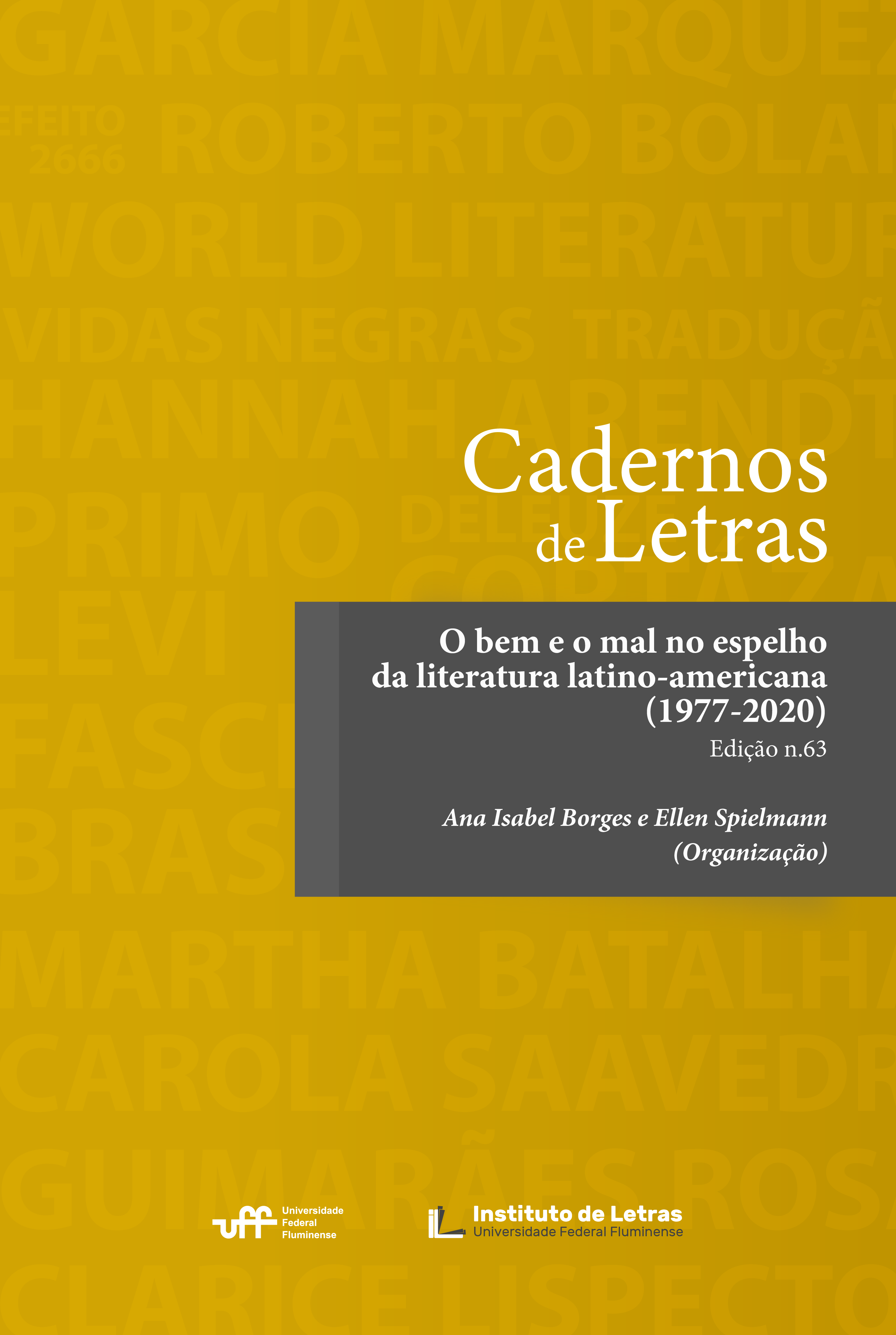As imagens no texto: entre García Márquez e Roberto Bolaño. Da alegoria do tempo ao universo das imagens
DOI:
https://doi.org/10.22409/cadletrasuff.v32i63.51566Abstract
The reading of Gabriel García Márquez´'story, Un señor muy viejo con unas alas enormes, starts by focussing the European Allegory of Time and shows throughout the analysis of the story - which narrates the voyage of this allegory to a Caribbean village - that this European concept of time does not fit in the cultural memory in this location. Within this beginning the study while undergoing how icons of oficial effigies of the Country´s fathers, starting by portrays of Simón Bolívar and the metafictions as allegories of the nation, as well as chronicles and paintings of landscapes, the article is closed by addressing Arturo Fontaine´s Cuando éramos inmortales. This narrative about a lesson of art history where the revolutionary works, Diego Velázquez´ As meninas and Pablo Picasso´s Guernica, are used by the ultraconservative professor to fake the discourse of art history in order to enunciate so-called universal catholic values. The intersections of texts-images are seen as types of representation and basic cultural types where the decisive moment of constitution seems to be the "infinite relation between language and painting", "visible and enunciable" (Foucault, As palavras e as coisas), “the antinomy of word and image” as a priori historical (Deleuze, Foucault). These theoretical reflections raised up what has been denominated “the pictorial turn”.
Keywords: Image. Relations between language and painting. Pictorial turn.
Downloads
Downloads
Published
How to Cite
Issue
Section
License
Copyright (c) 2024 Caderno de Letras da UFF

This work is licensed under a Creative Commons Attribution-NonCommercial 4.0 International License.
I authorize Cadernos de Letras da UFF to publish the paper of my authorship/responsibility that I now submit, in case it is accepted for online publication.
Moreover, I declare that this contribution is original, that it was not submitted to any other editor for publication, and I sign the present declaration attesting the truth of all its contents.
The copyright of the works published at the virtual space of the Cadernos de Letras da UFF are automatically entitled to Cadernos de Letras da UFF. Their total or partial reproduction is conditioned to the authors' citations and publication data.

Cadernos de Letras da UFF is licensed under a Creative Commons - Attribution-NonCommercial 4.0 International (CC BY-NC 4.0).





